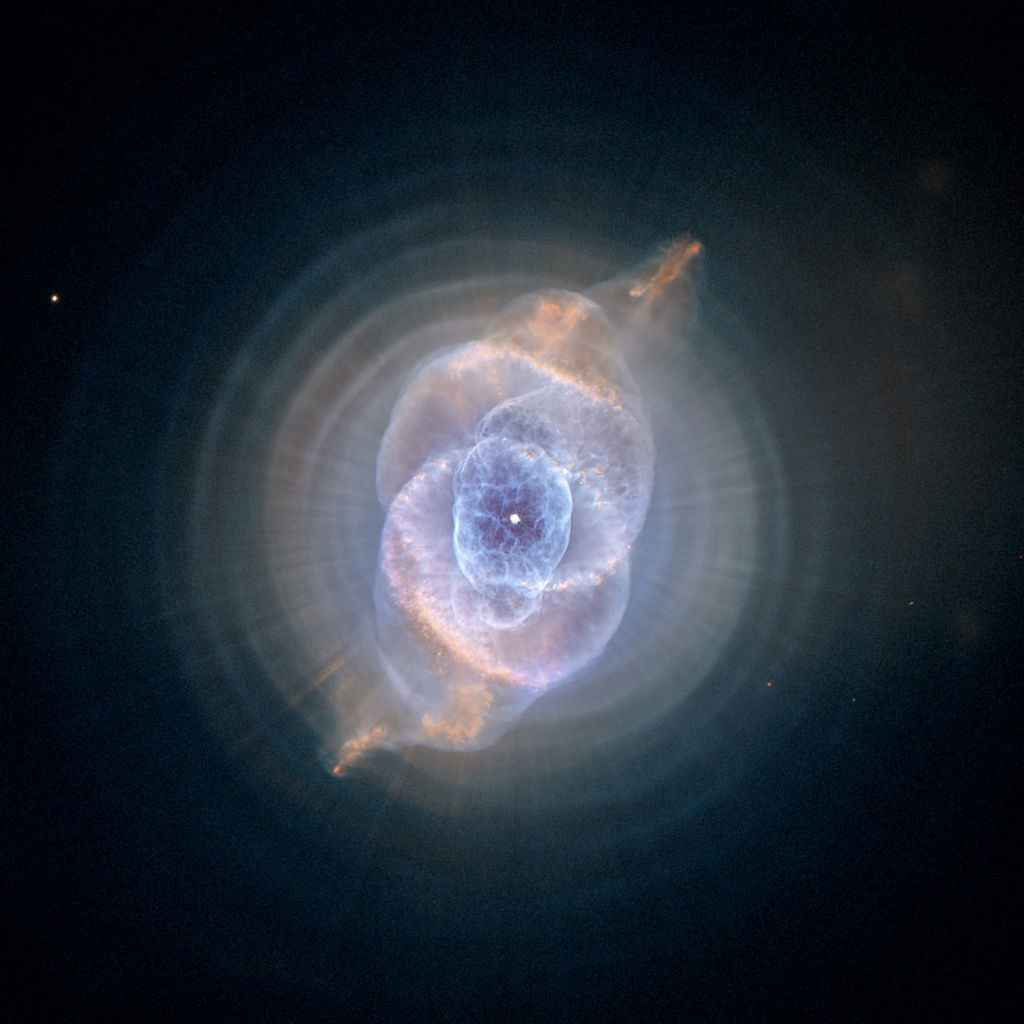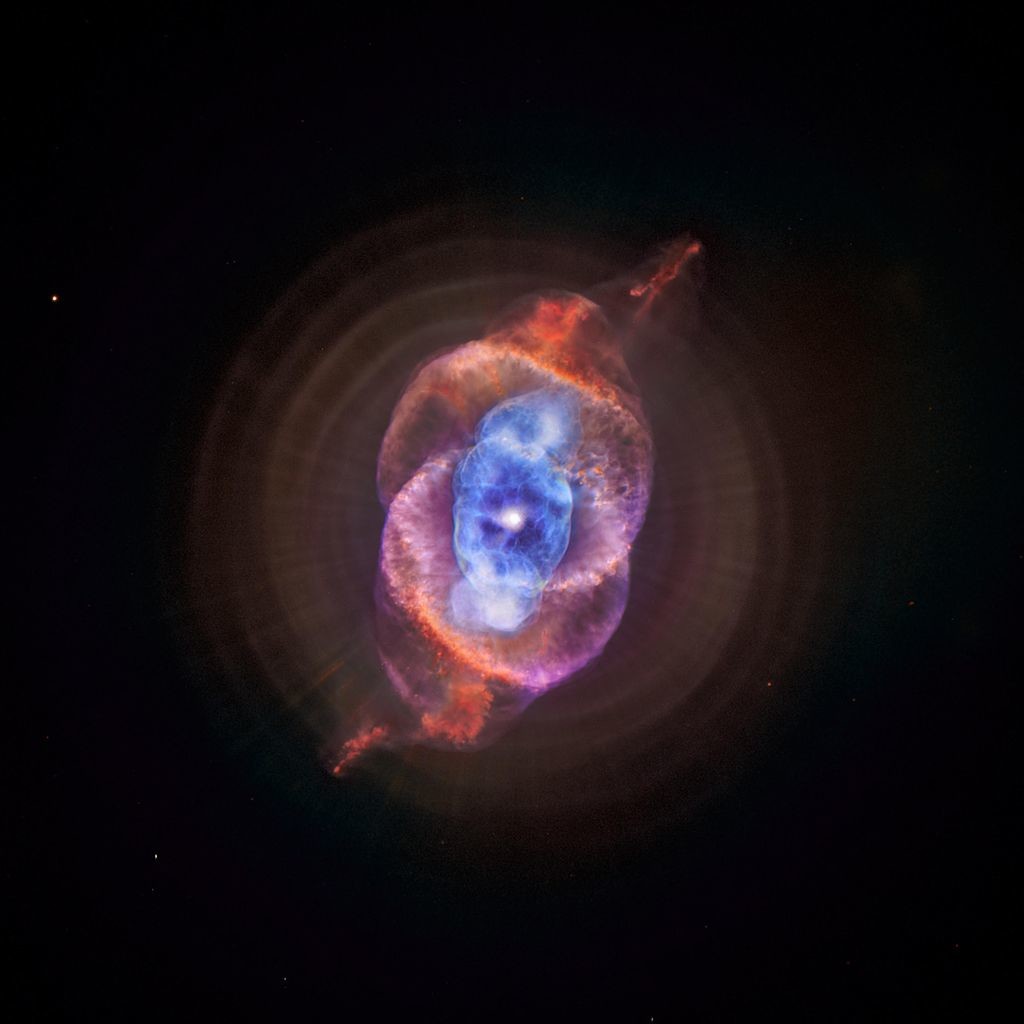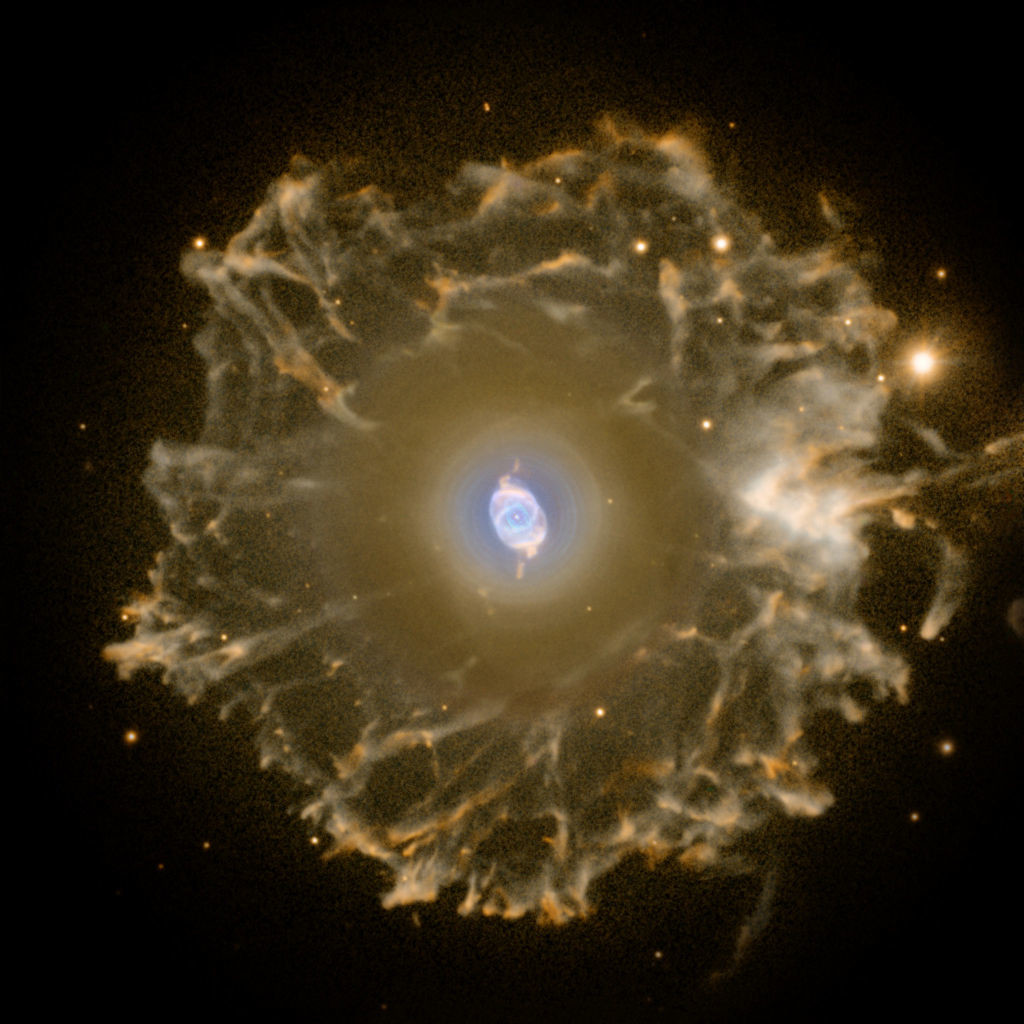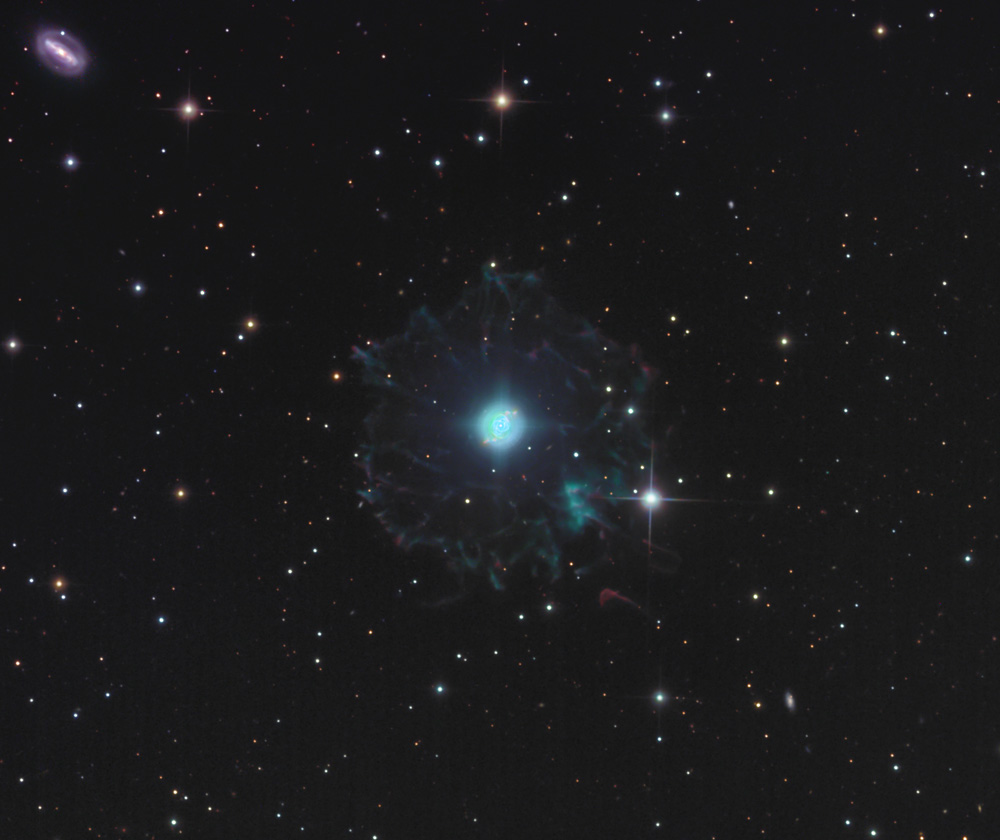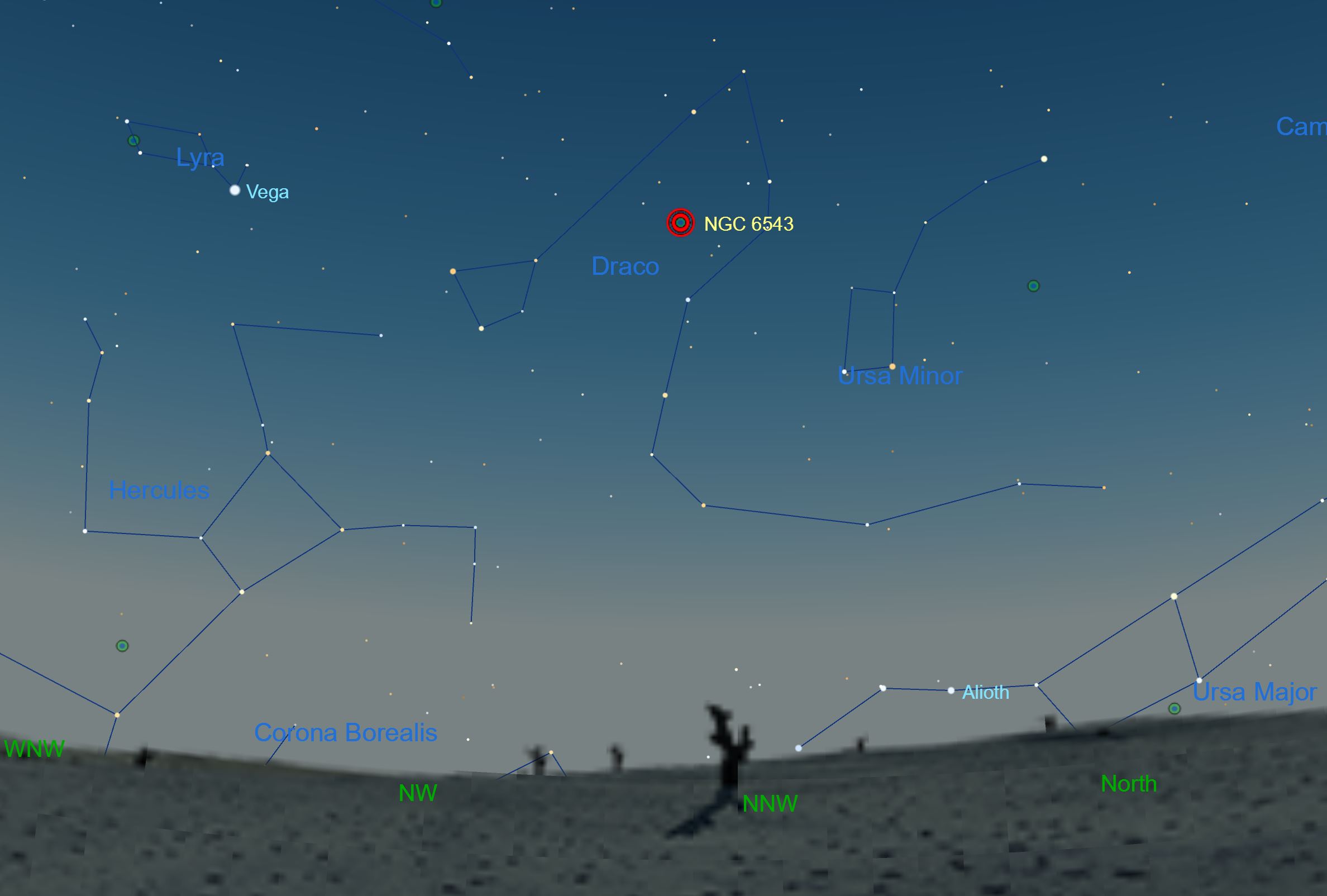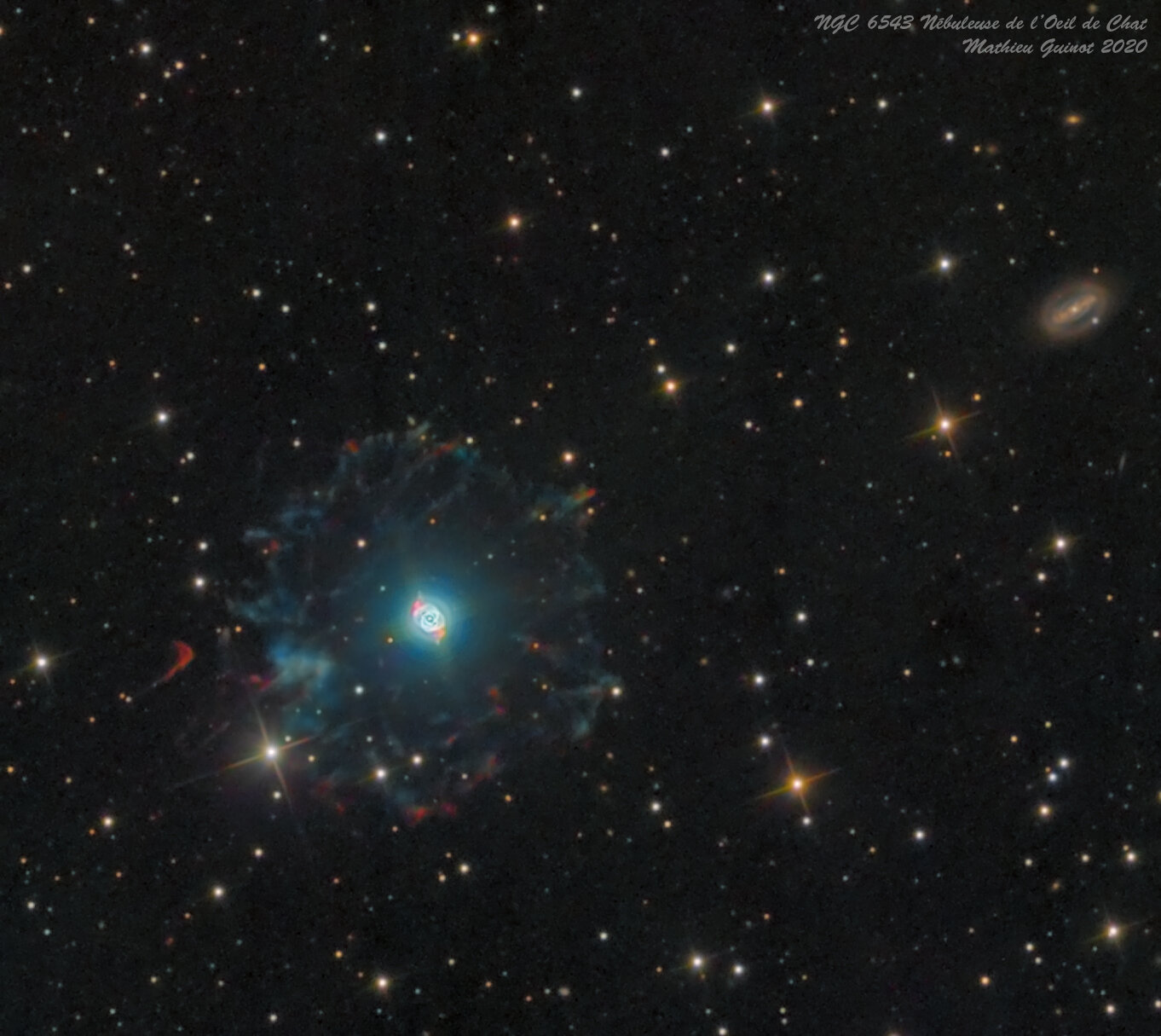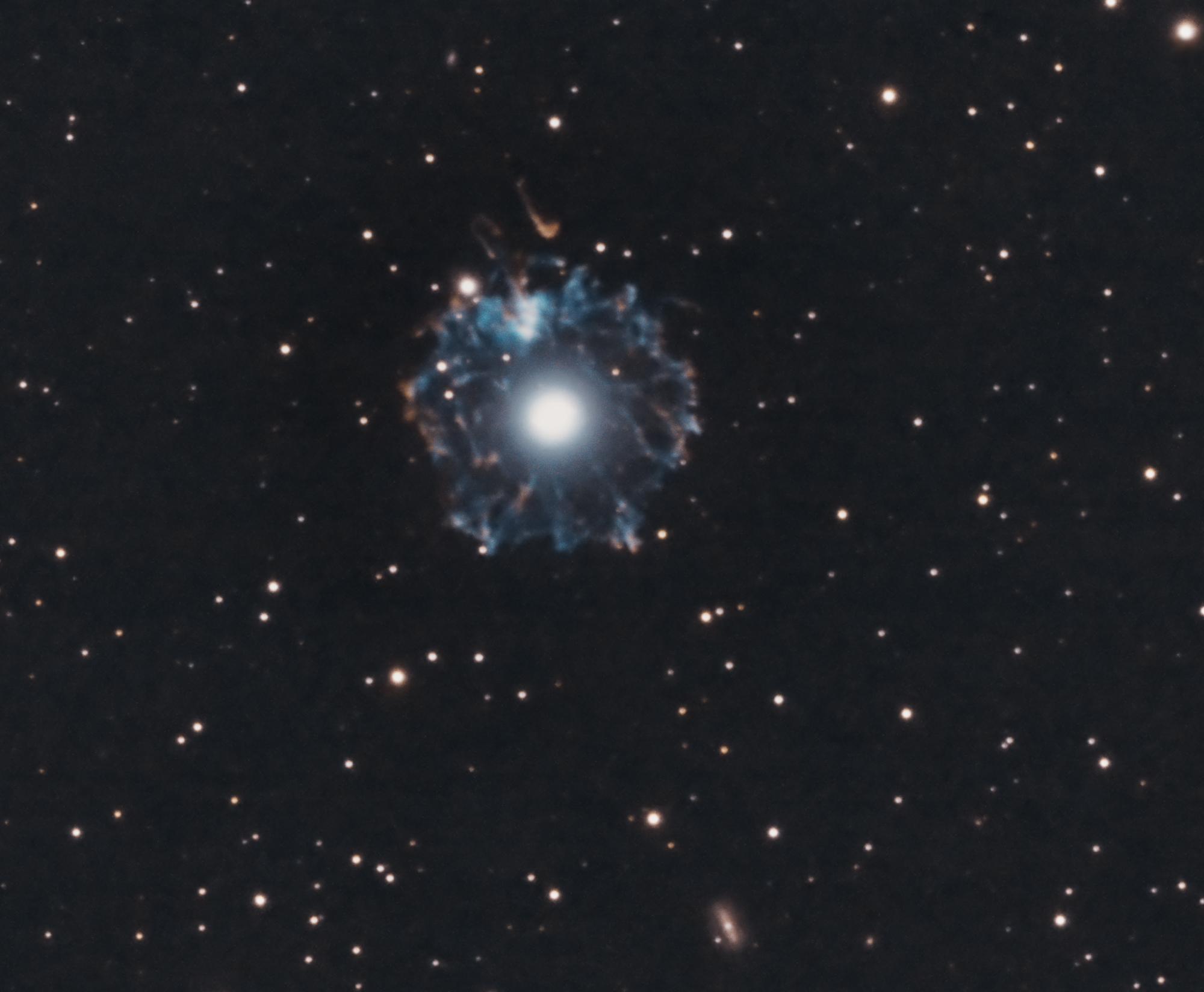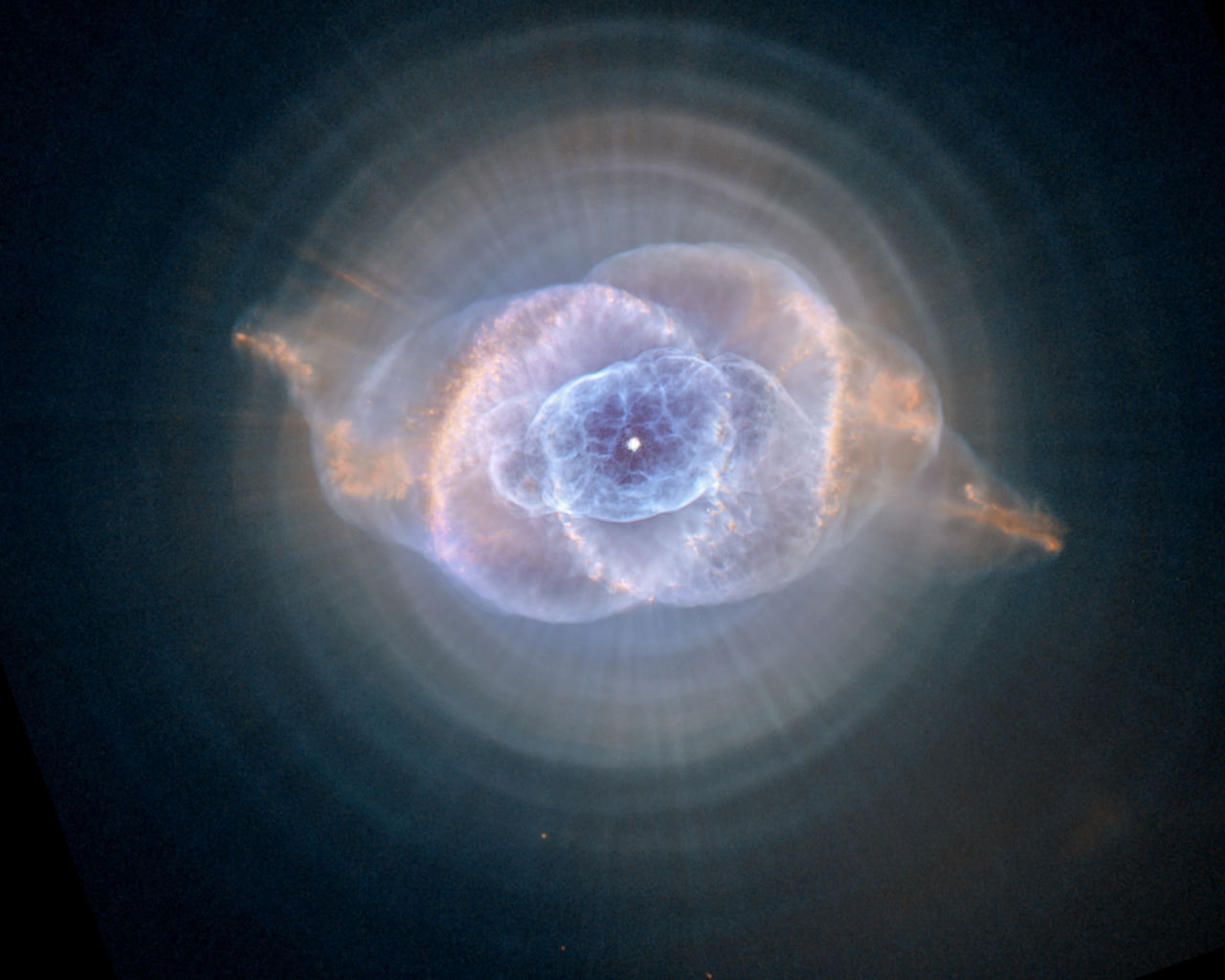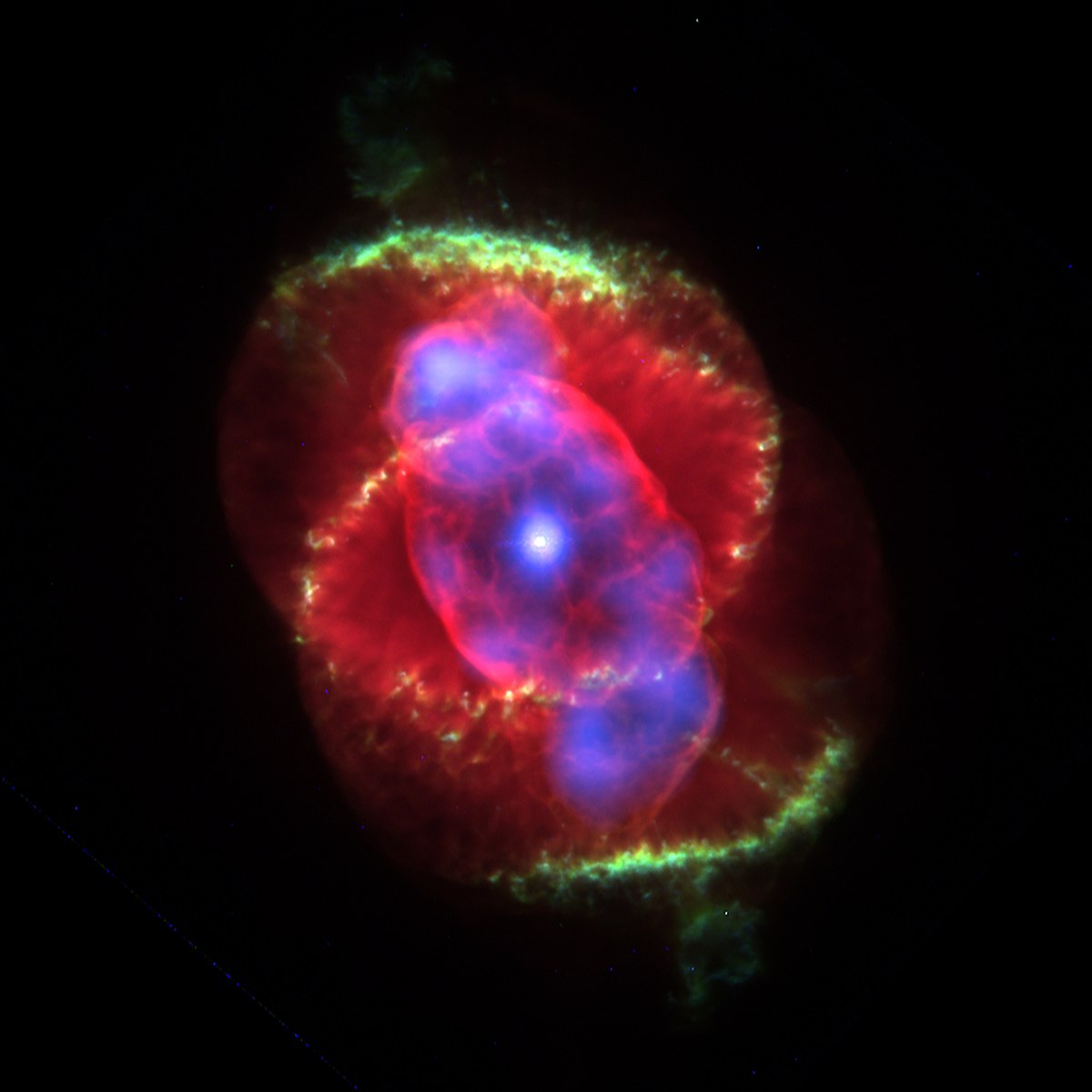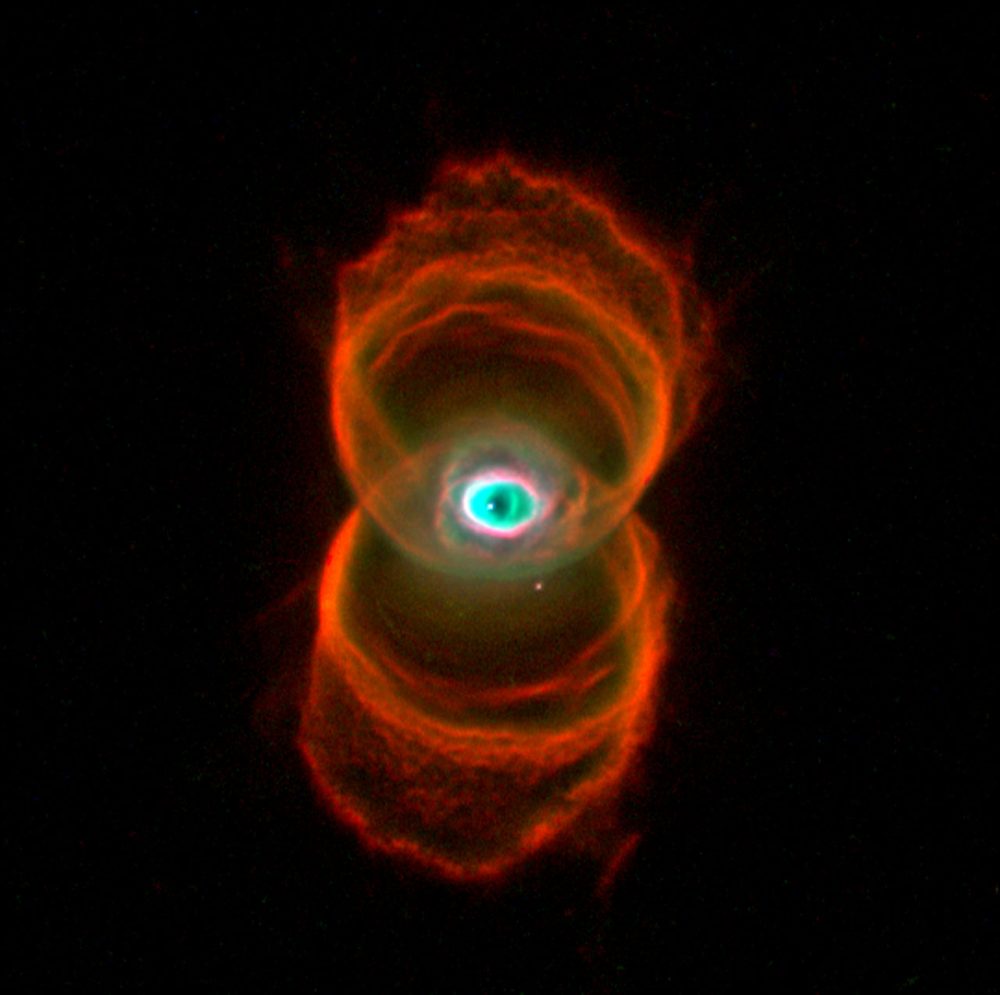Cat's Eye Nebula Age
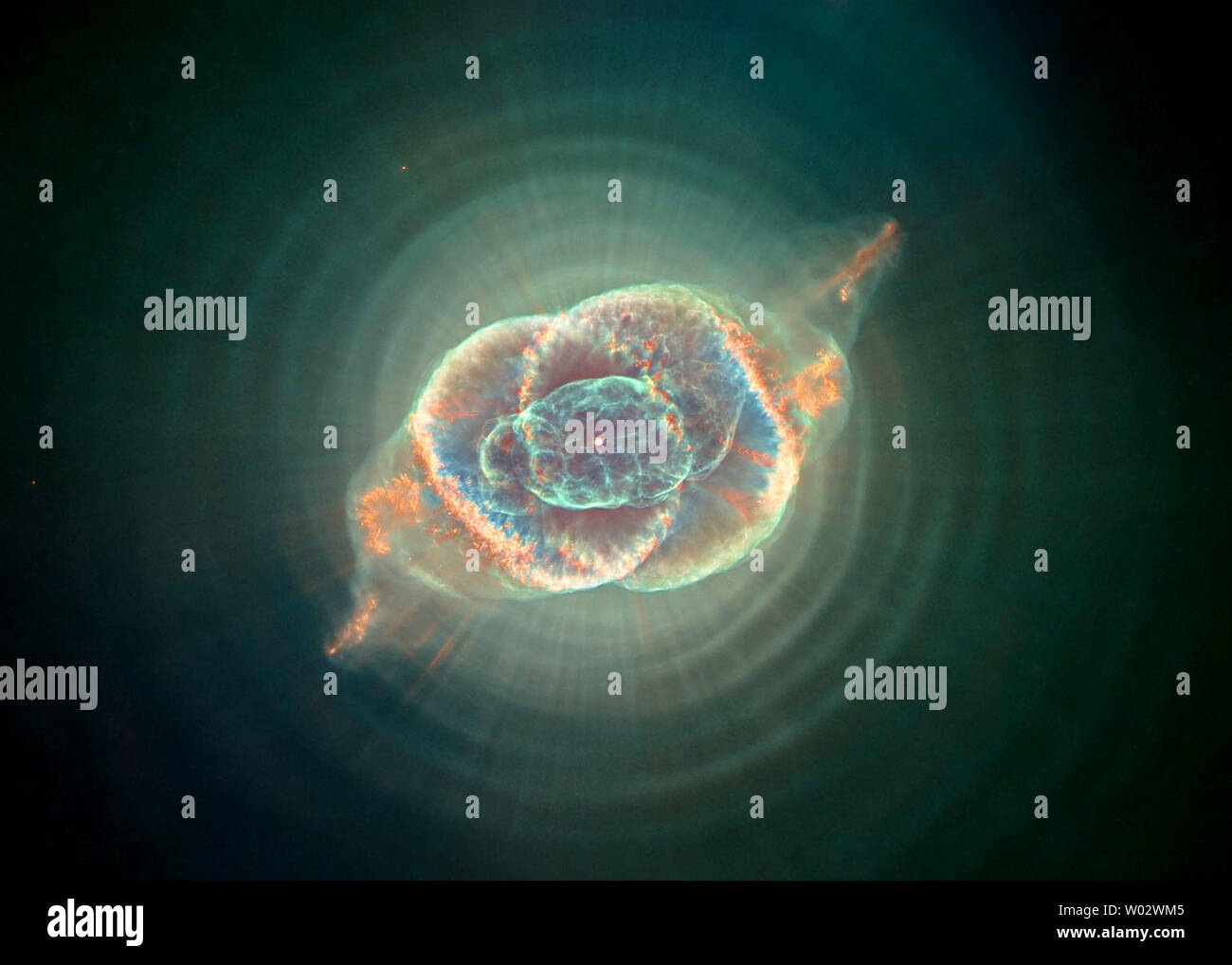
The Cat Eye Nebula NGC 6543 is a mythical object from the deep sky of the Northern Hemisphere.
Cat's eye nebula age. The Cats Eye Nebula was discovered by Herschel in the late 18th century. Huggins observations were the first indication that planetary nebulae consist of extremely rarefiedgases. The Discovery the Cats Eye Nebula.
It has been expanding ever since as can be seen by comparing Hubble images taken in 1994 1997 2000 and 2002. The different age material then interacts to form the various shock waves knots you can see. I took this over two nights from Nerpio.
The central star will continue to expand for another 10000 years give or take just a tiny fraction of its total lifespan until the central star runs out of atmosphere. A planetary nebula is the glowing gas ejected during the final stages of evolution of a star similar in mass to our Sun. It is similar in appearance to the Cats Eye Nebula and the Ring Nebula whose size age and physical characteristics are similar to the Dumbbell Nebula varying only in its relative proximity and the.
Herschel was a German-born astronomer who emigrated to Great Britain at age 19. This image reveals new details of the Cats Eye Nebula catalogued as NGC 6543 one of the most complex planetary nebulae ever seen. In 1994 Hubble first revealed NGC 6543s surprisingly.
The Cats Eye Nebula NGC 6543 is a planetary nebula in the constellation Dragon. It is a Planetary Nebula expanding gas shell ejected from an end-of-life star in the constellation of the Dragon whose age is estimated at only 1000 years and the distance at only 5200 light years. The nebulas structural complexity may be the result of material being expelled from a binary central star but the existence of a binary companion has not yet been.
Planetary nebulae are like snowflakes. To some it may look like a cats eye. A classic planetary nebula the Cats Eye NGC 6543 represents a final brief yet glorious phase in the life of a sun-like star.
